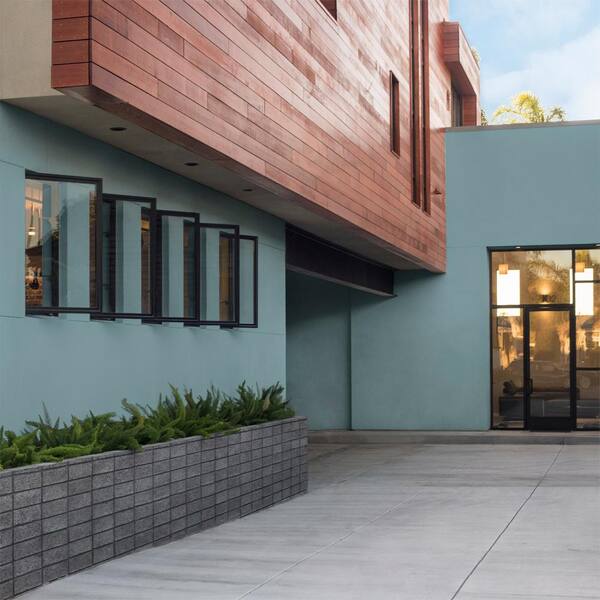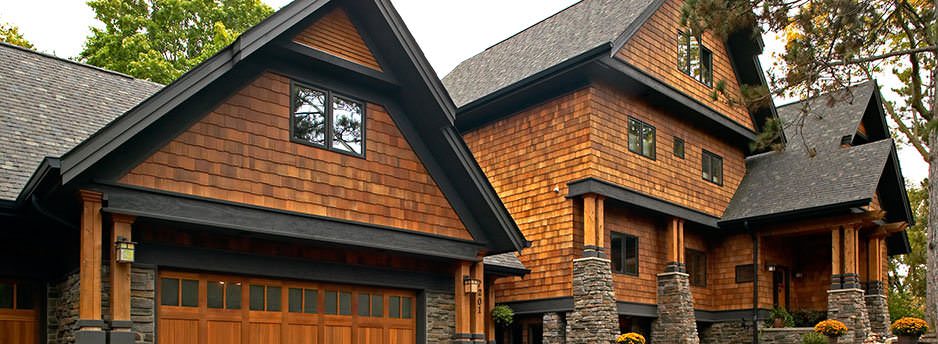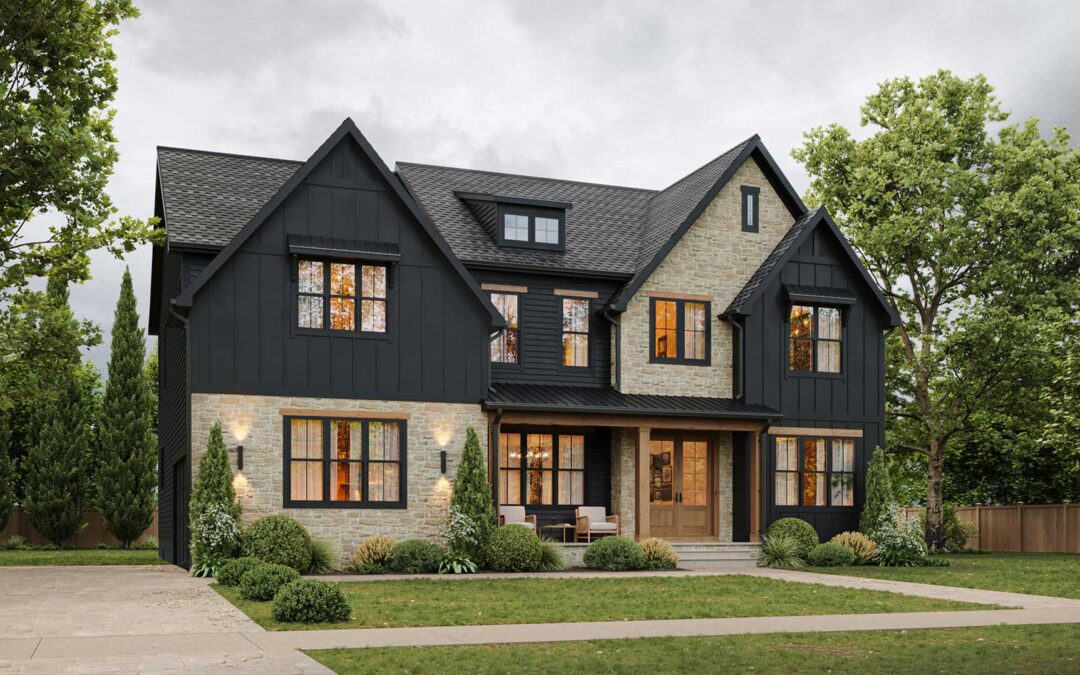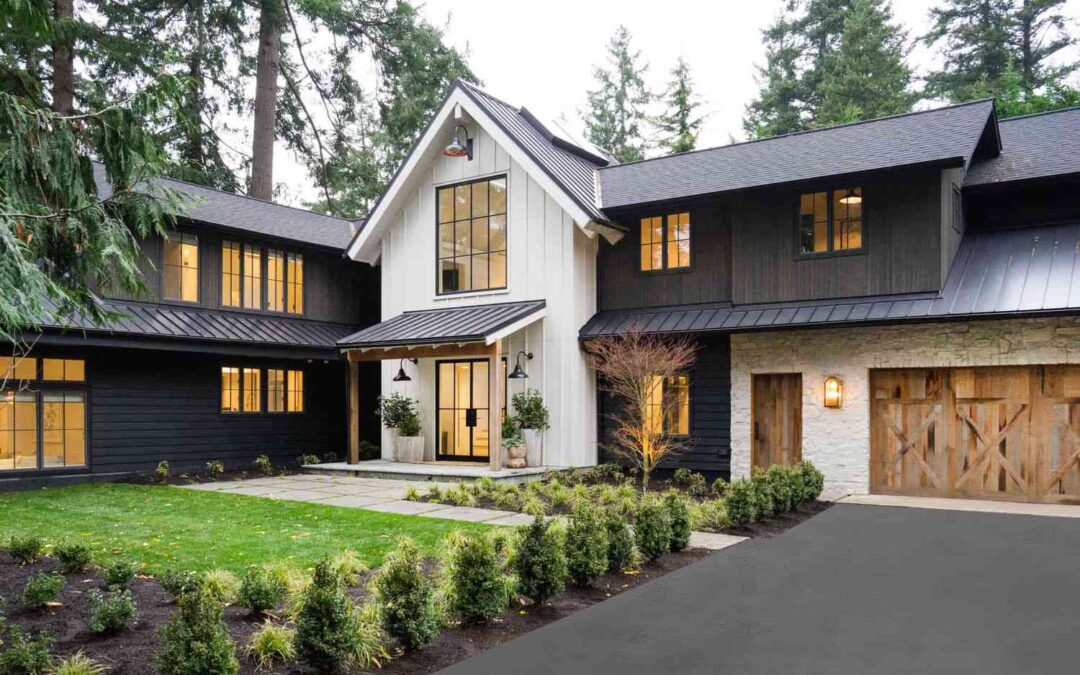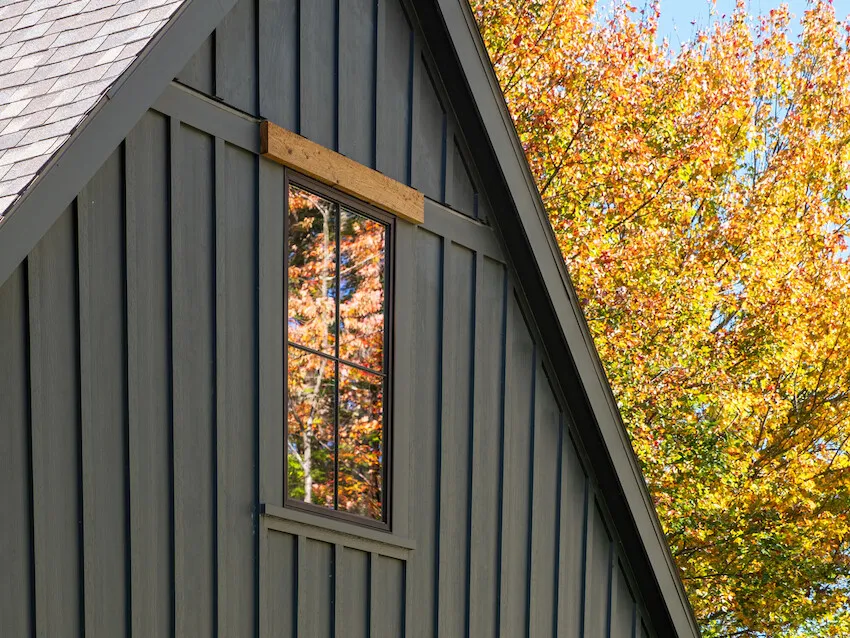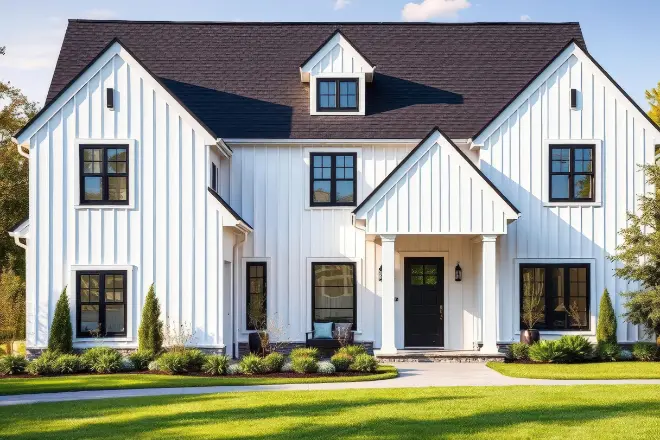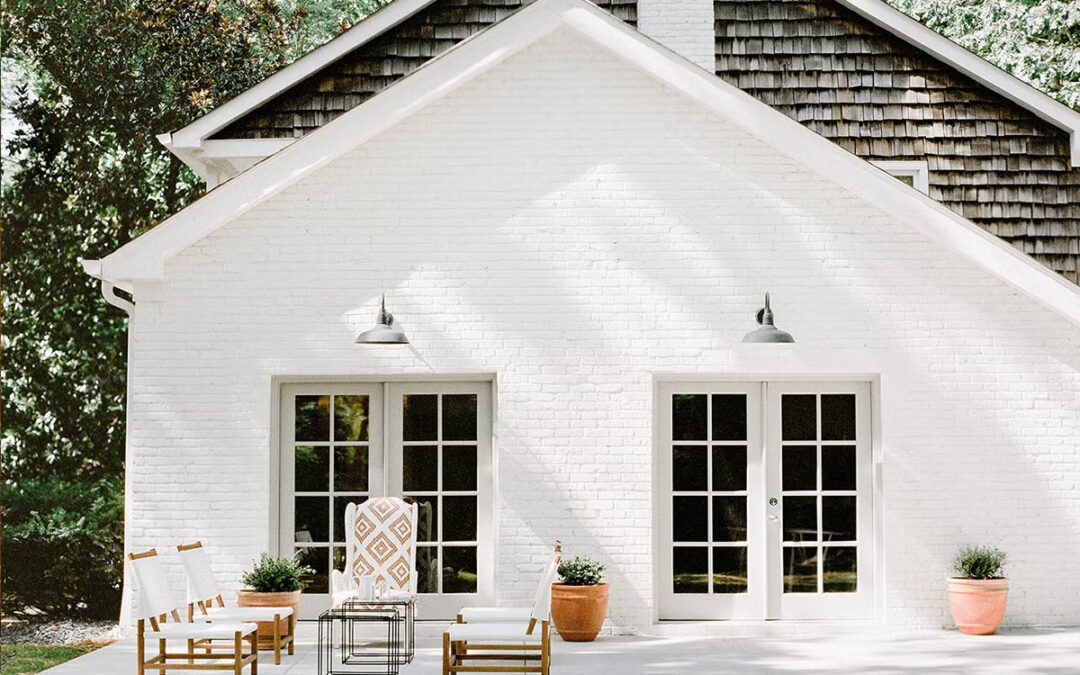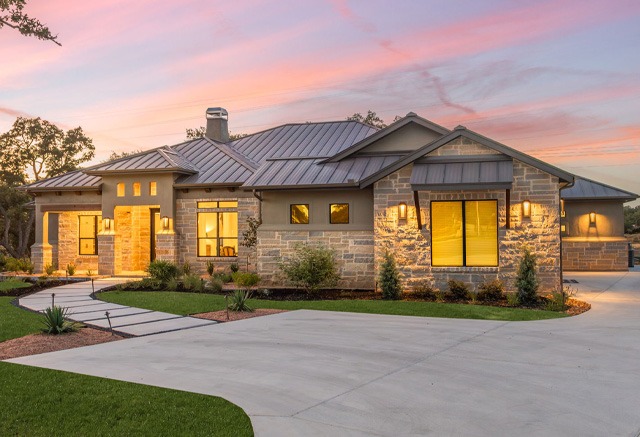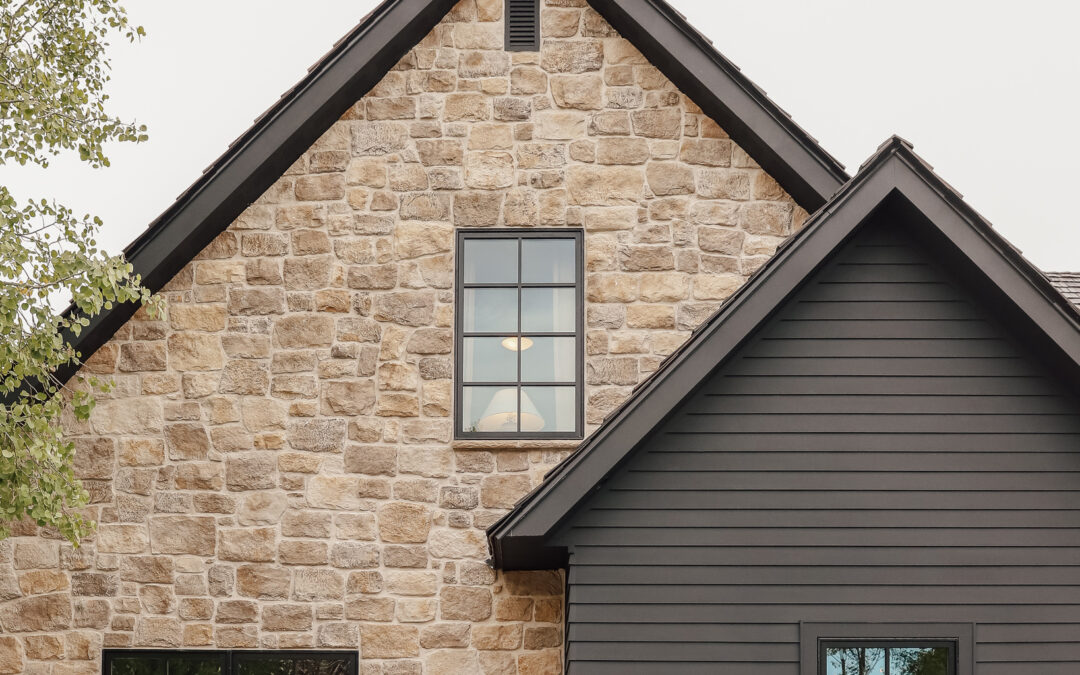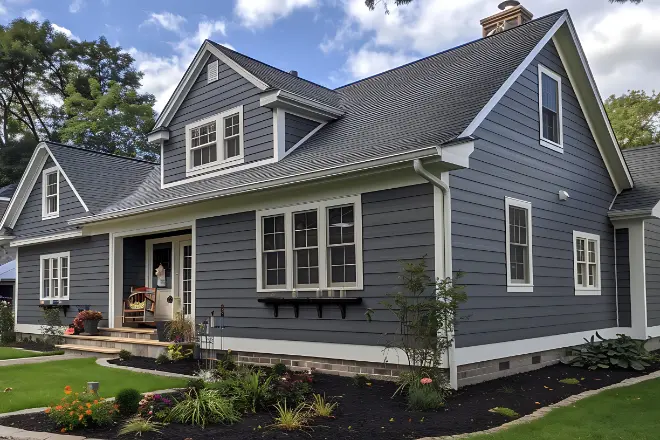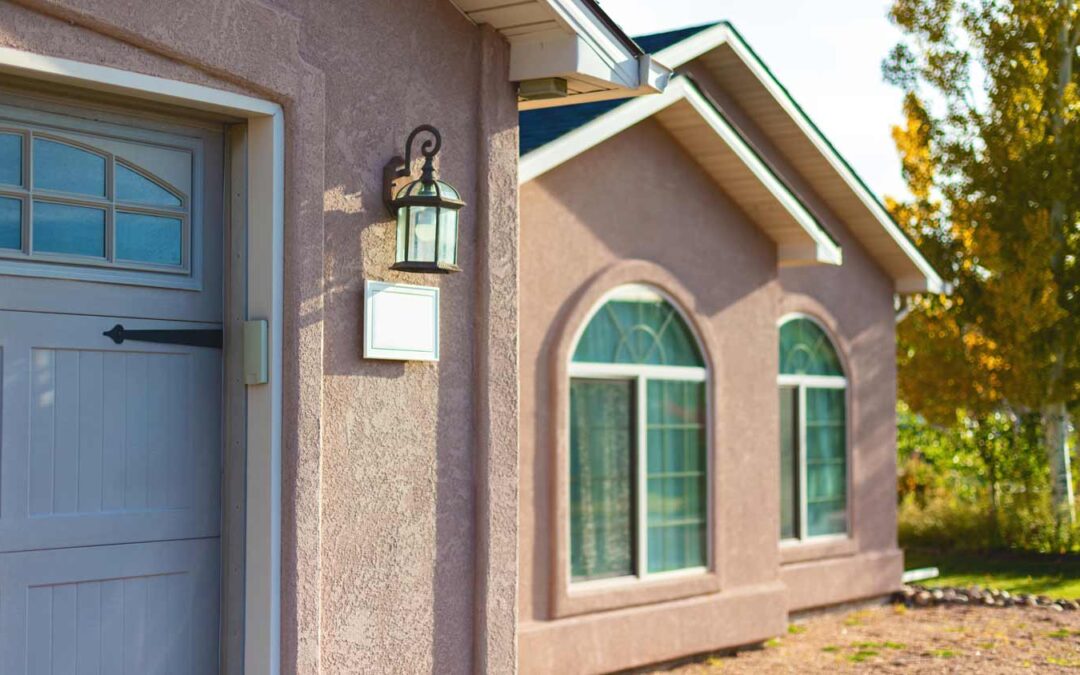Beyond the Surface: Why Choosing the Right Concrete Exterior Paint is Crucial🎨
If your home or commercial building features concrete, stucco, or masonry elements, you understand that these surfaces require specialized protection. Applying concrete exterior paint is more than just a cosmetic upgrade; it is a vital step in weatherproofing, preventing moisture intrusion, and extending the lifespan of your masonry. Unlike painting wood or vinyl, applying concrete exterior paint is a process that relies heavily on preparation, ensuring the high alkalinity and porous nature of the concrete are addressed.
Failing to use the correct materials or skipping essential prep steps can lead to immediate peeling, blistering, and moisture damage. This comprehensive guide by Imperium Exteriors details the seven critical steps for achieving a flawless, durable, and long-lasting finish using specialized concrete exterior paint and explains why Imperium Exteriors is the expert partner for your project.
The Right Paint: Specialized Formulas for Concrete Exterior Paint🧪
You cannot use standard exterior house paint on concrete or masonry. Concrete is porous, contains high alkalinity, and is prone to tiny stress cracks. Therefore, specialized paint formulas are required.
- Elastomeric Paint (The Gold Standard): This is the top choice for concrete exterior paint. Elastomeric paints contain polymers that make them highly flexible and elastic. They can stretch and bridge hairline cracks (up to 1/16th of an inch) that naturally occur in concrete as the structure settles and shifts.
- Acrylic Latex Masonry Paint: A high-quality acrylic is a durable, breathable option for surfaces in excellent condition. It offers good adhesion and resistance to alkali.
- Alkali Resistance: Due to concrete’s naturally high pH (alkalinity), the paint must be specifically formulated to resist alkali, preventing the paint from breaking down and blistering off the surface.
Step 1: Cleaning – The Non-Negotiable Foundation🧼
The success of your concrete exterior paint project is 80% preparation, and cleaning is the most critical step. Any dirt, efflorescence, or mildew will prevent the new paint from adhering properly.
- Pressure Washing: Use a pressure washer to remove loose debris, dirt, and old, flaking paint. The pressure should be high enough to clean but low enough not to damage the underlying concrete structure.
- Mildew and Mold: Treat any existing mold or mildew with a mixture of bleach and water (or commercial cleaning solution) and scrub thoroughly. All contaminants must be killed and removed before priming.
- Drying Time: Concrete is highly porous and absorbs water deeply. After cleaning, the surface must be completely dry—often 2 to 3 days—before any application begins.
Step 2: Repair – Addressing Cracks and Flaking🔨
Before applying any exterior paint, all major defects must be repaired.
- Efflorescence: This is the white, powdery substance caused by salt deposits leaching out of the concrete. It must be neutralized and brushed off completely before painting, as paint will not adhere to it.
- Filling Cracks: Use a high-quality, flexible masonry caulk or patching compound to fill any cracks wider than 1/16th of an inch. Ensure the filler is fully cured before proceeding.
- Spalling: Address any areas where the surface concrete is crumbling or “spalling” by removing loose material and patching with a specialized concrete repair mix.
Step 3 & 4: Priming and Proper Curing🧴
Priming is arguably the most important step for a lasting concrete exterior paint finish, as it manages the concrete’s porosity and alkalinity.
- Alkali-Resistant Primer: Always use an alkali-resistant masonry primer. This primer creates a necessary barrier between the high pH of the concrete and the topcoat, preventing chemical breakdown of the paint.
- Sealing Porosity: The primer soaks into the concrete, sealing its pores and creating a uniformly adhesive surface. This prevents the concrete from absorbing the expensive topcoat and ensures a smooth finish.
- Curing Time: Paint or prime should only be applied to concrete that has been allowed to cure for at least 28 days (for new concrete). For existing concrete, ensure the surface is completely dry and cured from repairs.
Step 5 & 6: Application and Topcoats🖌️
The final application of concrete exterior paint must be done strategically, utilizing the right tools for coverage and thickness.
- Application Method: For porous or textured concrete/stucco, using a thick nap roller is often better than brushing or spraying, as it forces the paint into the texture and ensures full, even coverage.
- Applying the First Topcoat: Apply the elastomeric or high-quality acrylic paint in thin, even layers. Allow adequate drying time (as per the manufacturer’s instructions) between coats.
- The Second Topcoat (Essential): Two full topcoats of concrete exterior paint are essential for maximum durability, weather protection, and color uniformity. The second coat is where you truly achieve the paint’s warranted thickness and protective qualities.
Step 7: Final Curing and Maintenance🧽
The process isn’t over when the final coat is applied. Proper curing is required for the concrete exterior paint to achieve its maximum durability.
- Avoid Moisture: Ensure the paint is protected from heavy rain or excessive moisture for the first 48 hours after the final coat.
- Ongoing Maintenance: Inspect the concrete exterior paint annually for any small hairline cracks (which the elastomeric paint should bridge) or signs of efflorescence. Regular cleaning (with a hose, not a pressure washer) will keep the finish vibrant for decades.
Why Imperium Exteriors is Your Concrete Exterior Paint Specialist🏆
Painting masonry is a highly specialized skill that requires expertise in chemical properties, moisture dynamics, and precise surface preparation. Imperium Exteriors ensures your concrete exterior paint project lasts.
- Prep Expertise: We specialize in the critical surface preparation, including efflorescence treatment and crack repair, guaranteeing a clean, stable surface for perfect adhesion.
- Elastomeric Focus: We use only premium, high-build elastomeric or masonry-specific acrylic paints designed to withstand the thermal movement and moisture issues inherent in concrete and stucco.
- Moisture Management: We understand the necessity of allowing the concrete to breathe and ensure the correct vapor-permeable primers are used, protecting the concrete from internal moisture buildup.
Secure a Flawless, Lasting Masonry Finish!🖌️
Applying concrete exterior paint is a process defined by expertise in preparation and material science. By following the seven critical steps—especially proper cleaning, repair, and alkali priming—and choosing the right elastomeric product, you ensure a durable, beautiful finish that protects your masonry for decades.
Don’t let a DIY mistake ruin your paint job!
Ready to ensure your concrete exterior paint job is done flawlessly?
🖱️Click Here to Schedule Your Free, No-Obligation Consultation: Our specialists will assess your masonry condition and provide a detailed plan and quote using premium concrete exterior paint materials.
☎️Call Us at (737) 376-5800
Visit Our Website: imperiumexteriors.com to explore our full range of exterior finishing and siding services.
🖥️ Choose Imperium Exteriors—where meticulous prep guarantees a long-lasting exterior finish! 🏆
🧠Frequently Asked Questions (FAQs): Concrete Exterior Paint🧠
Q: What is the biggest mistake people make when applying concrete exterior paint?
A: The biggest mistake is skipping the alkali-resistant primer. Applying the topcoat directly to unprimed concrete will cause the paint to break down chemically, resulting in premature peeling and blistering, often within the first year.
Q: Can I use standard exterior paint on concrete?
A: No. Standard exterior paint lacks the alkali resistance and often the thickness required to adhere properly and withstand the porosity of concrete. It will likely crack, flake, and fail prematurely due to chemical breakdown and moisture issues.
Q: Does elastomeric concrete exterior paint prevent all cracking?
A: Elastomeric paint is designed to bridge hairline cracks (up to about 1/16th of an inch) that form as concrete naturally moves. It cannot prevent or repair major structural cracks; those must be professionally repaired with flexible patching compound first.
Q: How long should high-quality concrete exterior paint last?
A: When properly applied in two topcoats over a dedicated masonry primer, high-quality elastomeric or specialized acrylic concrete exterior paint should last 10 to 15 years or more before needing professional recoating.
Siding Shingles in Austin: Reimagine Your Amazing Home with Chic & Sturdy Siding Shingles
The Superior Protection and Style of Siding Shingles🏡✨ Austin homes face a relentless environment: extreme summer heat, intense UV damage, and sudden, severe weather. If your current exterior is showing wear or you\'re simply looking for a major aesthetic upgrade, it\'s time to consider a truly transformative solution - siding…
The 5 Essential Siding Options for Home Durability & to Dominate the Texas Heat in Austin
Austin’s Armor: Choosing the Best Siding Options for Home Durability and Style:🛡️⚔️ Your home\'s exterior is the most critical shield it has. In the 512, that shield has to stand up to a lot: brutal UV rays, sudden hailstorms, flash floods, and even the occasional wildfire risk in our greenbelt…
The 5 Best Sherwin Williams Exterior Paint Colors for Austin Durability That Will Transform Your Beautiful Texas Home
The Ultimate Austin Glow-Up: Why Sherwin Williams Exterior Paint is Your Home\'s Best Friend🎨 Howdy, Austin and Central Texas homeowners! Your home\'s exterior is the reflection of your style and the first line of defense against our notoriously challenging Texas climate. In a city as dynamically unique and artistically vibrant…
5 Reasons James Hardie Vertical Siding is the Ultimate Design: Modern Farmhouse King 🏡👑
Vertical Vision: Why James Hardie Vertical Siding is the Architectural Game-Changer📐🛠️ When transforming a home\'s exterior—whether embracing the ubiquitous Modern Farmhouse aesthetic or striving for sleek, contemporary lines—the orientation of your siding matters. While horizontal lap siding is the traditional choice, James Hardie vertical siding (known as HardiePanel®) offers a…
Why Shiplap Siding Is the Ultimate Rustic-Chic Upgrade for Your Central Texas Home in 2025
Austin\'s Enduring Charm🌇 ✨ Howdy, Austin and Georgetown homeowners! If you are dreaming of giving your home a stylish makeover that expertly balances historical charm with modern flair, then shiplap siding could be the transformative solution you need. Whether your preferred aesthetic is the beloved modern farmhouse, a classic coastal…
5 Brilliant Secrets to Brick Exterior Paint: Your Austin Home’s Ultimate Glow-Up
Unlock Your Home\'s Potential: The Timeless Appeal of Painted Brick🧱🎨 Brick has long been celebrated for its timeless charm and durability. It’s a classic choice for homes across America, including here in Central Texas. But as with any exterior, age, sun, and weather can leave a once-vibrant brick facade looking…
Siding for House Ideas & Trends for 2025: Your Ultimate Guide to Bold & Beautiful Siding
Austin\'s Exterior Evolution🏡✨ Your home’s exterior is the crucial first impression and architectural statement, especially in a dynamic city like Austin, where historic and modern styles coexist. If your facade is faded or lacks the distinctive Central Texas charm, exploring innovative siding ideas is the perfect way to achieve a…
7 Stunning Ways Siding with Stone Will Transform Your Austin Home’s Imaginative Style
The Art of Combining Textures and Materials🪨 🎨 Howdy, Austin homeowners! In a city celebrated for its architectural diversity, from rustic Hill Country ranches to sleek modern farmhouses, every home tells a unique story. But what’s the secret to creating a home exterior that truly captivates and stands the test…
7 Reasons James Hardie Products Dominate Extraordinary Austin Home Exteriors🏡🛡️
Beyond Wood and Vinyl: Why James Hardie Products are the Gold Standard🪵💫 When making a major investment in your home\'s exterior, the brand you choose matters—especially when it comes to long-term durability and protection. One name stands out as the undisputed leader in performance, style, and engineering: James Hardie products.…
5 Expert Tips for Flawless Exterior Paint on Stucco: Your Ultimate Austin Guide
Breathe New Life into Your Home with the Perfect Paint Job🏡🖌️ Painting your home\'s exterior is one of the most effective ways to boost curb appeal and protect your most valuable asset. While many homeowners are familiar with painting siding or wood, painting stucco presents a unique set of challenges…
Ready to Upgrade the Exterior Paint of Your Home?
Don’t wait to experience the transformational power of new exterior paint. Contact Imperium Exteriors, your trusted Central Texas exterior house painting company, to explore our top-of-the-line paint options and get a free consultation today!
📞 Call us at (737) 376-5800
🌐 **Visit imperiumexteriors.com

